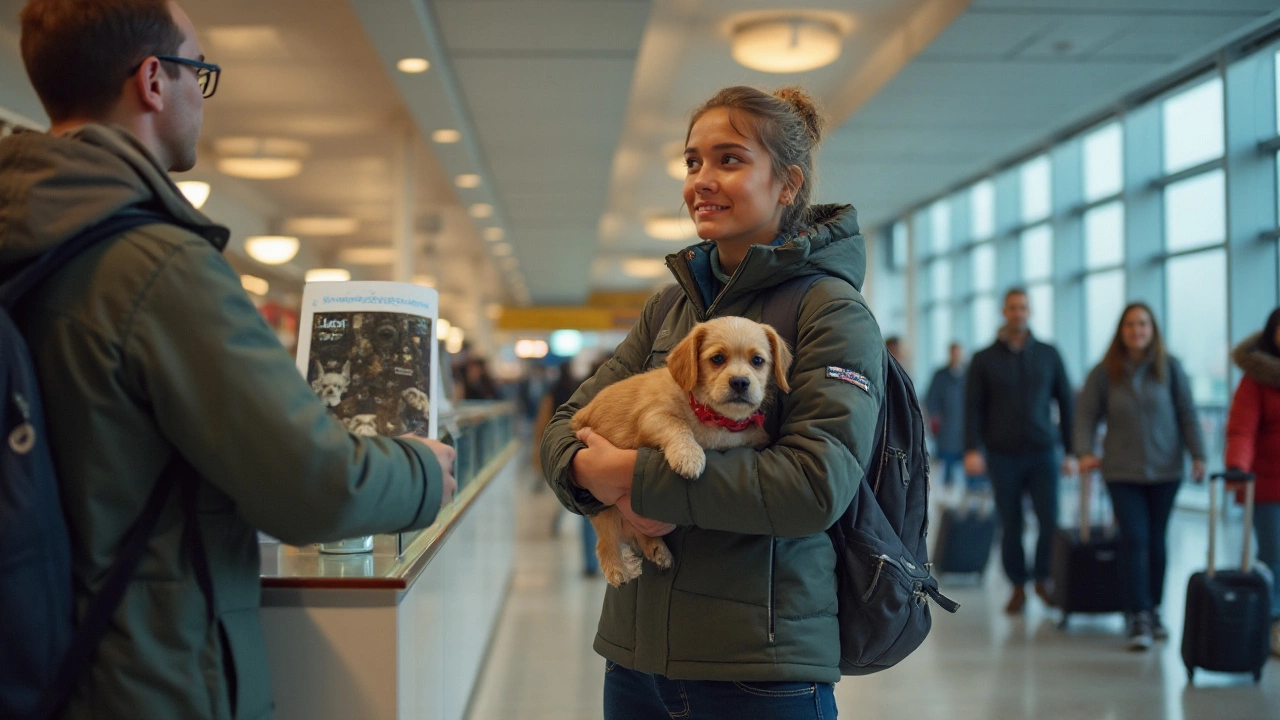Pet‑Friendly Airlines: How to Fly with Your Dog Stress‑Free
If you love traveling and don’t want to leave your dog at home, you need an airline that treats pets right. The good news is that many carriers now have clear rules, comfortable crates, and even in‑cabin options for small dogs. Below you’ll find the most useful steps to pick the best airline and get your pup ready for the sky.
Choosing the Right Airline
First thing to do is read the pet policy on the airline’s website. Look for details on size limits, whether your dog can sit in the cabin or must go in the cargo hold, and how much the fee will be. Some airlines charge a flat fee, others base it on weight. Knowing the cost upfront stops surprises at the check‑in desk.
Airlines that consistently get good reviews from dog owners include Air France, KLM, Lufthansa, Alaska Airlines, JetBlue, and Southwest. These carriers usually allow dogs under 15 lb to travel in the cabin, give you a sturdy carrier that fits under the seat, and have staff who know the basics of pet care on board.
Pay attention to the fine print: some airlines require a health certificate issued within ten days of travel, while others need a microchip. Also check the seasonal restrictions – many carriers close the cargo hold for pets during hot summer months.
Preparing Your Dog for the Flight
Schedule a quick vet visit a week before you leave. The vet will confirm your dog is healthy enough to fly, update vaccinations, and give you the paperwork the airline asks for. A microchip is a bonus because many airlines list it as a must‑have.
Choose a crate that meets the airline’s dimensions and lets your dog stand, turn around, and lie down comfortably. Add a soft blanket and a couple of familiar toys. A small bag of Galloway Gourmet Dog Treats can keep your pup calm without over‑feeding.
On travel day, feed your dog a light meal about four hours before the flight and give plenty of water. A short walk right before you head to the airport helps burn off extra energy, making the crate experience smoother.
Arrive early – at least two hours before a domestic flight and three for an international one. This gives you time to check in, drop off the crate, and walk your dog to the gate. If your dog is traveling in the cabin, store the carrier under the seat and keep the belt fastened.
During the flight, keep the carrier stable and avoid opening it unless the crew says it’s okay. A few treats from the pocket can distract a nervous pup, and a gentle voice helps reassure them. Most dogs settle after the first hour once the cabin pressure evens out.
When you land, let your dog out of the carrier as soon as you reach a safe area. Give them a chance to stretch, sniff, and relieve themselves. Check for any signs of stress – panting, shaking, or loss of appetite – and call the vet if anything looks off.
Following these steps makes flying with your dog feel like a routine trip rather than a gamble. Pick a pet‑friendly airline, get the paperwork sorted, choose a comfy crate, and keep treats handy. Your dog will thank you with a wag when you both walk out of the airport together.

Navigating the Challenges of Flying with Pets: Tips and Tricks
Flying with a pet can be a daunting experience for both the animal and the owner. Understanding airline policies, preparing your pet for the journey, and ensuring their comfort and safety are crucial aspects. Each airline has different regulations, and knowing these is essential. This article offers helpful tips and facts to ease your travel and ensure a smoother journey for your furry friend.
View more